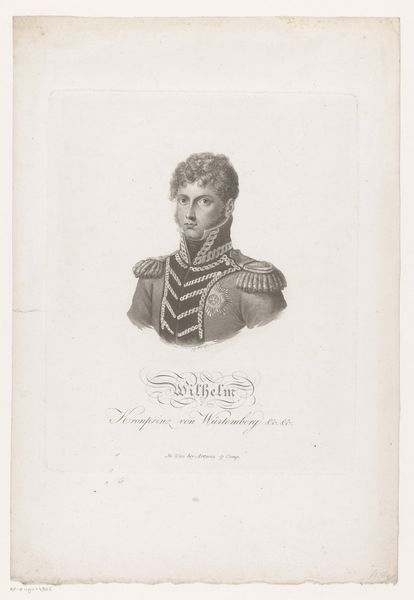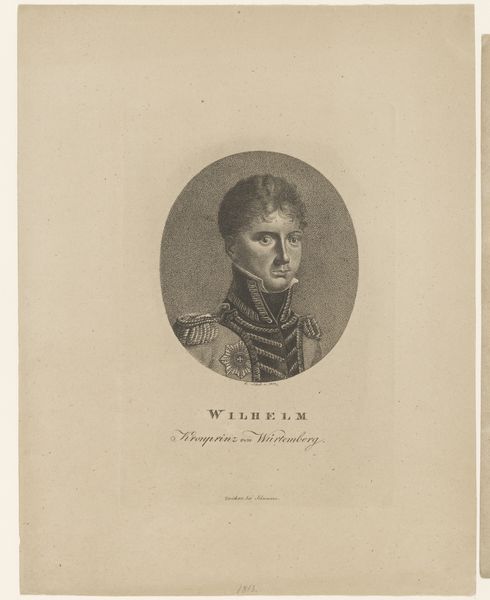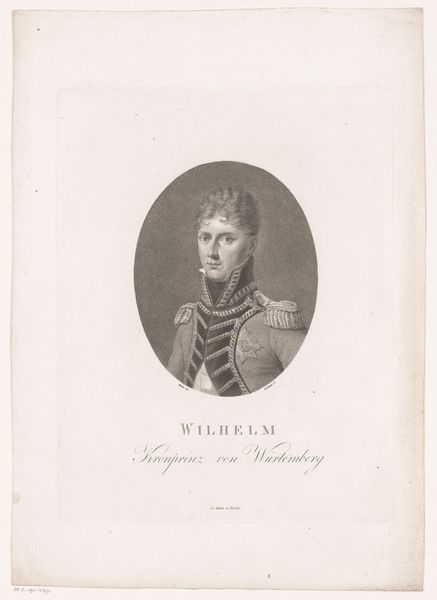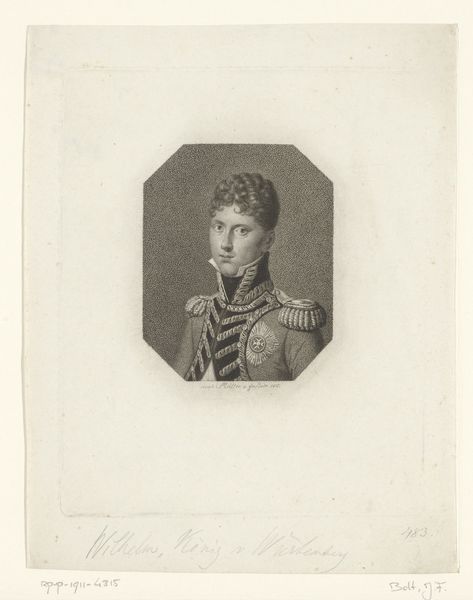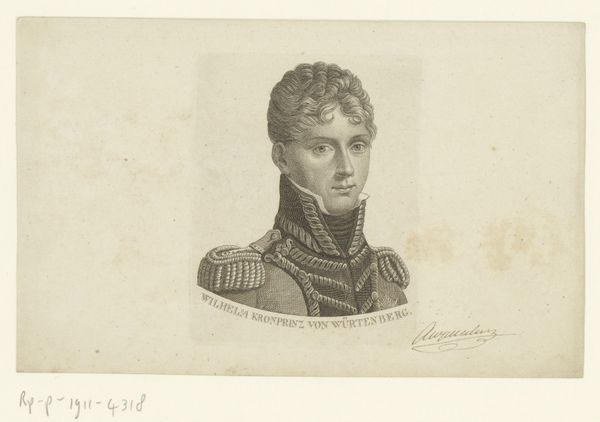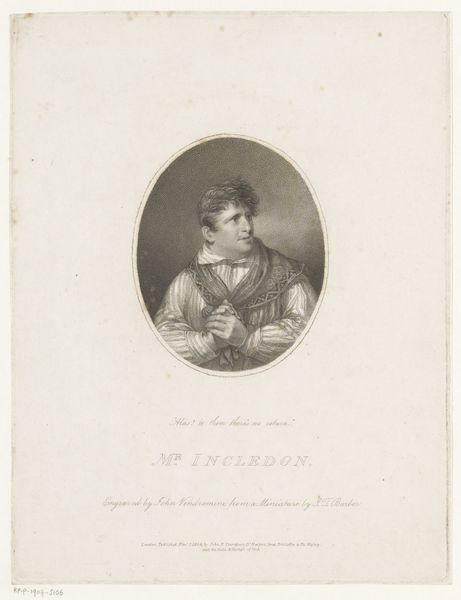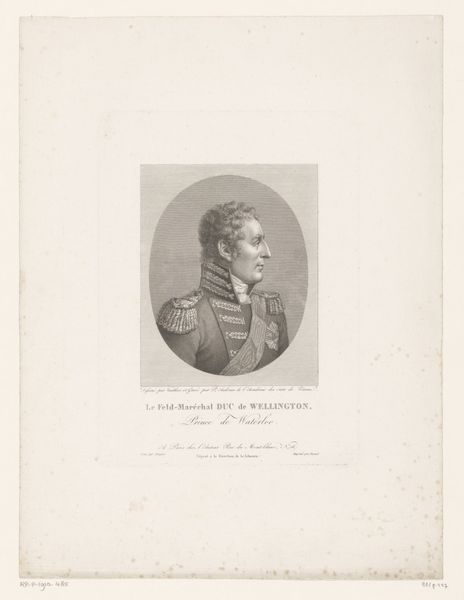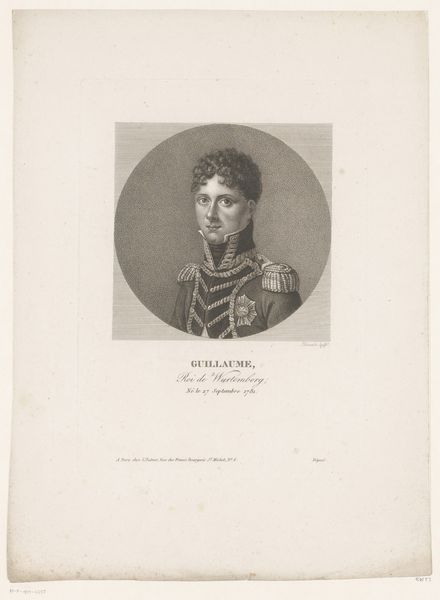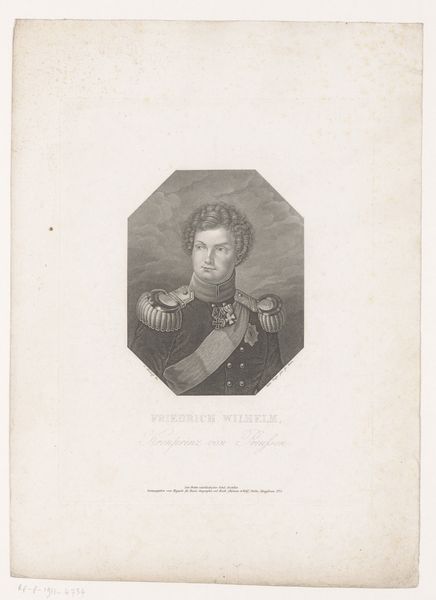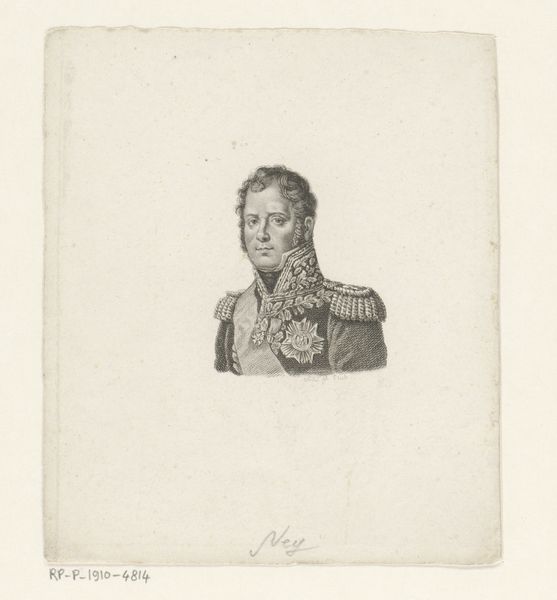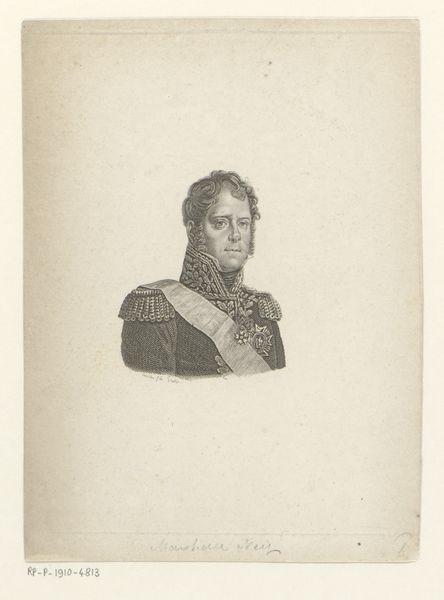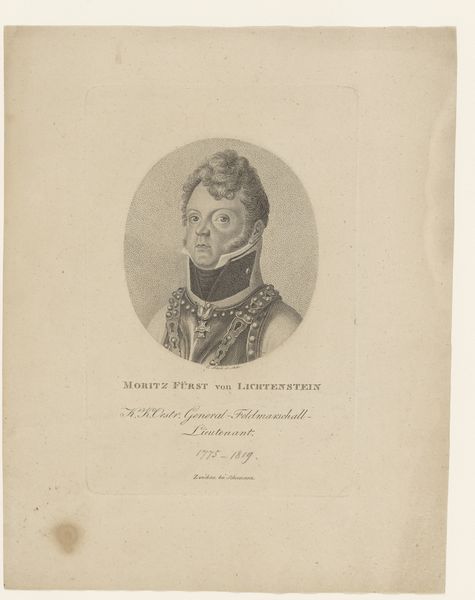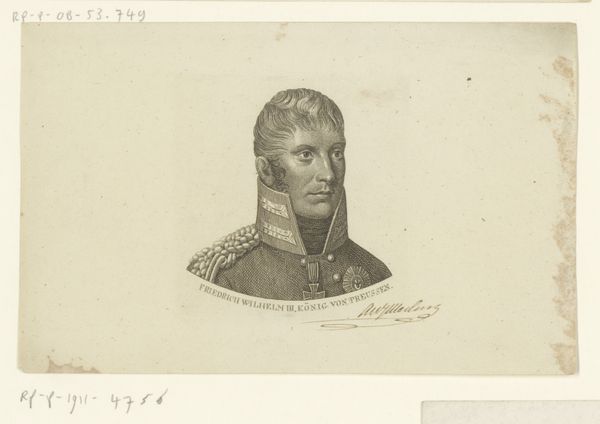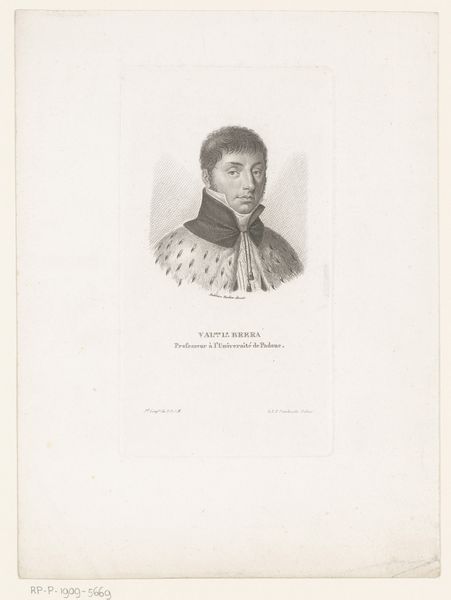
print, engraving
#
portrait
#
neoclacissism
# print
#
engraving
#
realism
Dimensions: height 273 mm, width 207 mm
Copyright: Rijks Museum: Open Domain
Curator: What strikes me about this engraving, titled "Portret van Willem I, koning van Württemberg," circa 1820, is its almost clinical depiction of royalty. The artist, Primo Torchiana, has achieved such detailed precision here. Editor: I find its visual restraint immediately calming, almost serene. The limited tonal range accentuates the crisp, clean lines and balanced composition. The sharp edges and delicate curves interact, and the balance creates a captivating tension between meticulous detail and airy lightness. Curator: Right, the very technique of engraving lends itself to a crisp formality, but it's interesting how Torchiana uses it. In depicting Willem, notice how little emotion he allows to surface. It speaks to the cultural expectations of leadership—to be stoic, dependable, an emblem of stability. His likeness becomes an ideal, stripped of the messy realities of humanity, that carries on to history and posterity. Editor: Indeed. Focus on how the intricate linework delineates every button, every braid of his military jacket, the overall geometry of the jacket with vertical chevrons. All emphasize this constructed, formal image of power. I see it reflected, too, in his expression. Curator: It’s fascinating how such details function as signs of authority in this period. His attire becomes symbolic. Each embellishment, from the star to the precisely rendered hair, acts as a visual cue reinforcing his position in the societal structure, communicating and affirming a network of historical assumptions of order and power. The weight of dynastic expectations visibly etched into his very appearance. Editor: The rendering, with its carefully controlled textures, and linear precision seems perfectly aligned with the neoclassicist movement. The details amplify the feeling that we're not looking at the likeness of a man so much as examining a constructed emblem, rigidified for posterity. Curator: Yes, in essence, this piece provides us a potent image that not only illustrates its subject as an individual but also works to embody and disseminate cultural ideologies about rulership and identity during the era. The image becomes a site of both individual portraiture and symbolic representation, capturing historical perspectives on power. Editor: What ultimately lingers for me is its compelling contrast: the delicate fragility of the print medium itself, alongside the implacable, carefully manufactured aura of monarchical power it conveys. Curator: For me, it is how this restrained image resonates as a kind of time capsule, embedding and echoing social values that inform visual language across centuries.
Comments
No comments
Be the first to comment and join the conversation on the ultimate creative platform.
